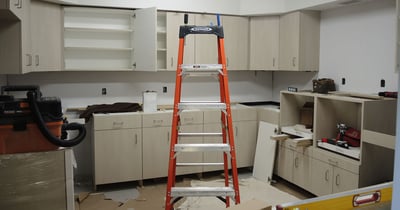For more than 20 years we’ve been helping schools to pass their bond elections, and going back further than that, our Education Facility Specialists are former School Superintendents who have worked on their own campaigns while leading their respective Districts. We have a lot of experience and want to help you know what works and what doesn’t when you’re creating your school bond campaign materials.
Cory Sursely
The History of Wolgast’s Construction Management Division
Experts claim that a form of Construction Management (CM) construction delivery was used in ancient times as far back as the pyramids. However, according to Construction Management Association of America, CM became known as a distinctive construction delivery option in the 1960s1. The need for a new construction delivery method at that time was due to more “sophisticated” systems being designed for large, complicated buildings and stricter regulations. It was a growth time for the HVAC industry with the introduction of air conditioning and computerized control systems2. More complex applications increased the role of the contractor to be more involved with the “specification of equipment and parts”. There eventually was a shortage of HVAC installers and with the increased desire for air conditioning, shoddy applications led to many problems. A problem which was well suited for CM advocacy between the Designer and the Contractor.
The Benefit of Design Build Phase I Drawings
Preliminary plans, such as those provided in a Phase I of the Design-Build process, are the most efficient and economical means to determine the budget for your construction project.
While there has been a shift in the numbers1, there are still many business owners out there who are skeptical of the Design-Build method of construction. They are more familiar with the traditional Design-Bid/Build method where they hire an architect, then have general contractors competitively bid the project, and the contractor with the best price/value builds the project.
Flexible Finish Substitutions Can Improve Construction Time & Budget
Architects and engineers are smart people who are dedicated to taking the information their clients provide them and designing an aesthetically pleasing and functional building to meet their client’s goals. In their design specifications, they include specific products for building finishes, which they’ve researched or have experienced, to match the desired outcome expressed by their client. Typically, these materials or products have also been discussed with and accepted by the client.
The Story of Wolgast’s Speed
Speed is one of the most coveted aspects when it comes to commercial construction and nothing improves speed like doing a project right the first time. You could argue that cutting corners can sometimes make it faster, and that’s true until it causes rework, back tracking, or failures down the road. Our founder, Jerry Wolgast, had the philosophy of “do it right the first time” and that is still instilled in us today. However, we have implemented programs to help us consistently meet or exceed our deadlines rather than just hope that everything falls into place.
Customer Service Request – Quick Service after Construction
Business owners can have a difficult time finding a contractor to complete small projects within their buildings. Switching out doors, replacing trim, or hanging coat racks are projects that most general contractors put on the back burner as they are busy handling larger projects. We believe, a business owner would want to use the contractor who built their building, or the subcontractor who was originally involved on the project when a change or repair is needed because these workers already know the building inside and out. Hence, we created our Customer Service Request System (CSR) for our clients more than a decade ago.
Why Do Customers Choose Design Build Construction?
The Design-Build approach to project construction puts one company in charge of a customer's entire project. Which means, owners have a direct line of communication to one firm in providing all services needed to complete a project. These services include master planning, engineering and design, scheduling, estimating, cost control, procurement, quality assurance, quality control, safety, construction and all other interrelated functions. This approach is known to shorten the construction schedule as well as add value through the project.
Michigan's Energy Code (2015) to Save Energy for Building Owners
The 2015 Michigan Energy Code, as directed by Licensing and Regulatory Affairs (LARA), went into effect Sept 20, 2017. The changes to the code involve lighting controls of new commercial buildings and remodels with more than 50% lighting alterations in an effort to increase energy savings. In a nutshell, different areas of a commercial building will need both sensors and a wall switch or dimmer to control lighting.
Universal Design Can Change Your Business
In 2015, there were roughly 53 million Americans1 who were disabled either in mobility, in hearing, or with their vision. Moreover, there are the aging baby boomers with special needs, mothers with strollers, and an increasing number of people using service dogs who each have different accessibility needs to public places. Whether you are a restaurant, retailer, bank, medical office, or school (to list a few), you likely already have Americans with Disabilities Act (ADA) standards to meet when you build a new building or remodel your existing one; however, if you aren’t already regulated by Title II or Title III, there are still benefits of planning your building for access to everyone, also known as Universal Design, which is different from ADA. Some are considering Universal Design an emerging concept of good citizenship, much the same way LEED has done for reducing a company’s carbon footprint. Compared to ADA which is mandated by the government to provide accessibility for disabled people within publicly used buildings, Universal Design is a choice that a building owner makes to include accommodations not regulated by the ADA to provide easy accessibility to everyone.
The Most Popular Areas of an Office Remodel (REMODELING Part I)
And Other Office Remodeling Insights
The idea of an “office remodel” covers a broad spectrum of happenings. We’ve completed those that are elaborate and include removing walls to change the layout of the floorplan and others that are as simple as










